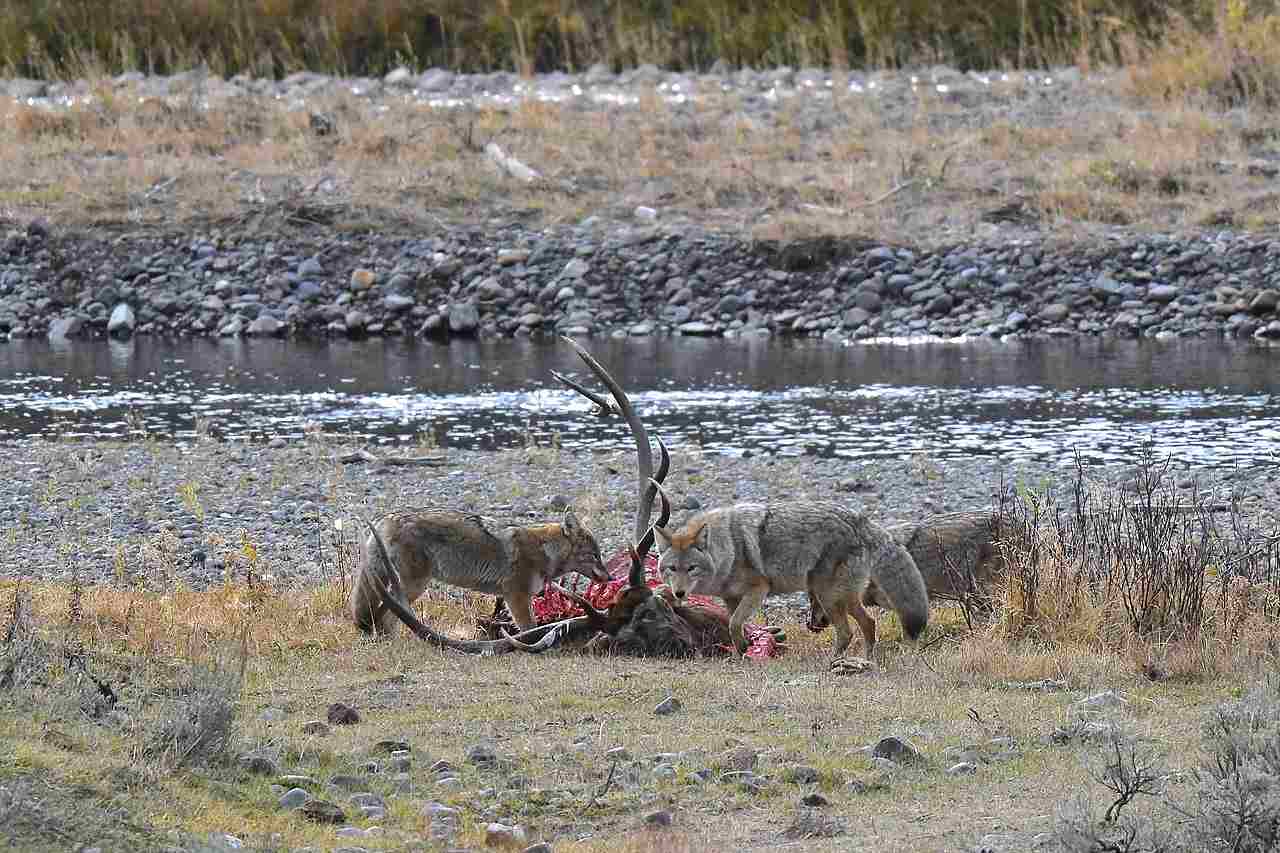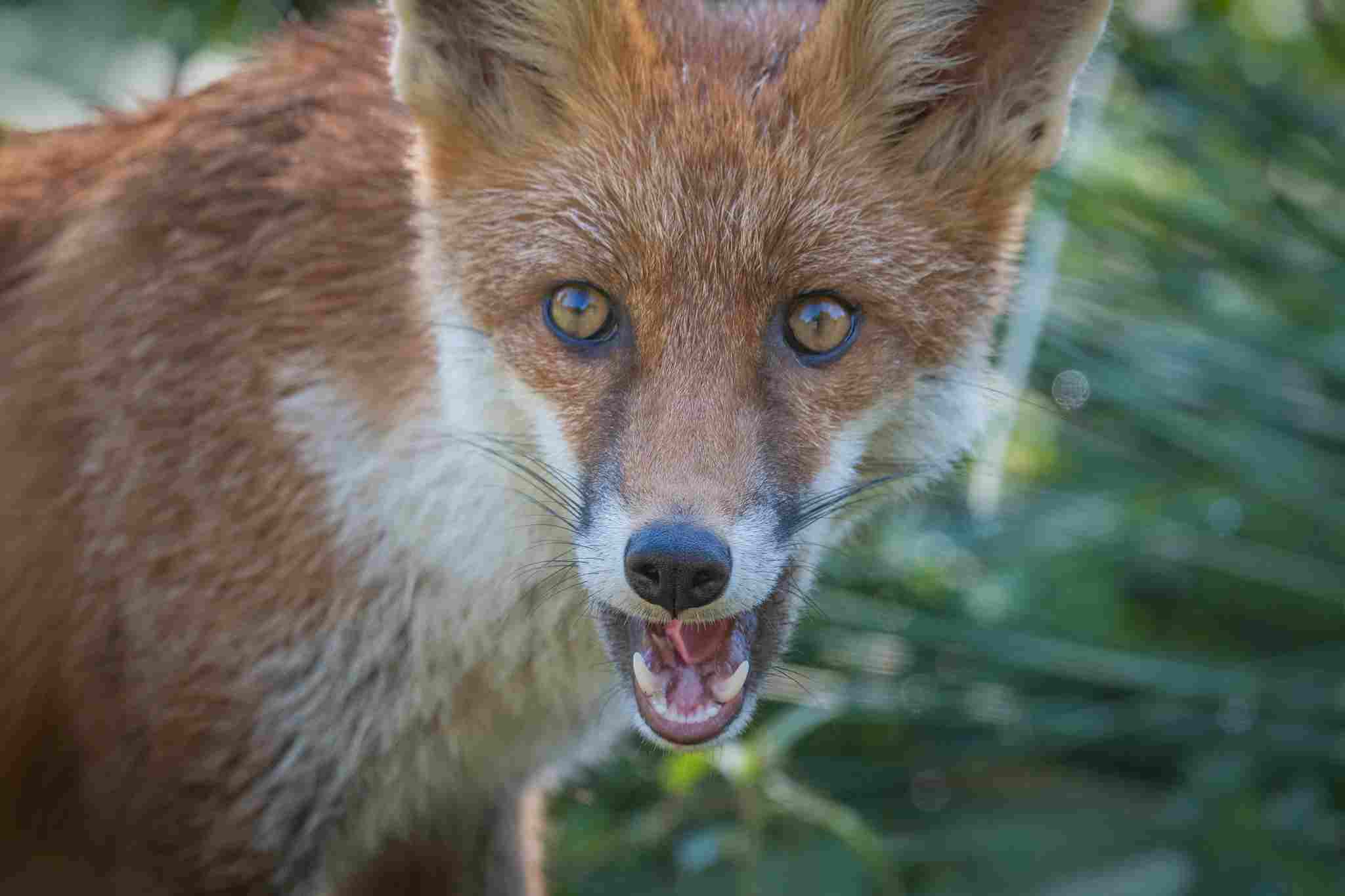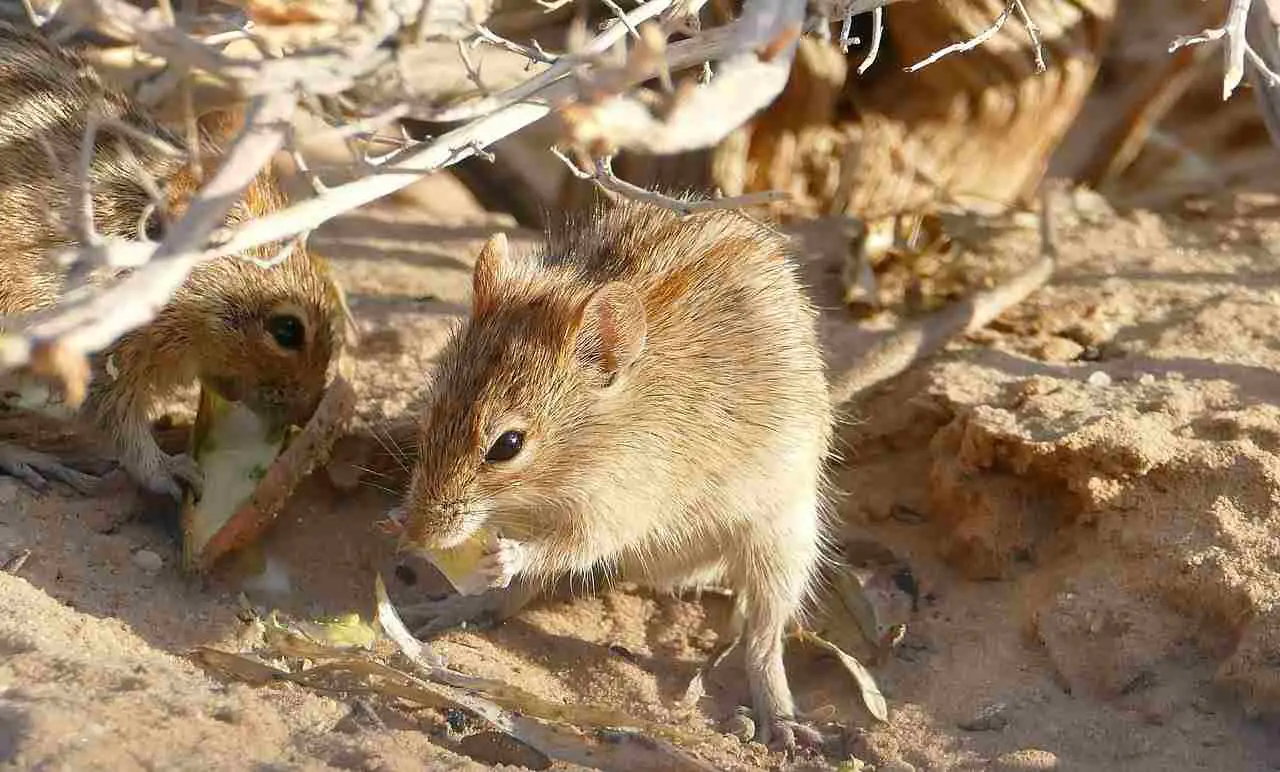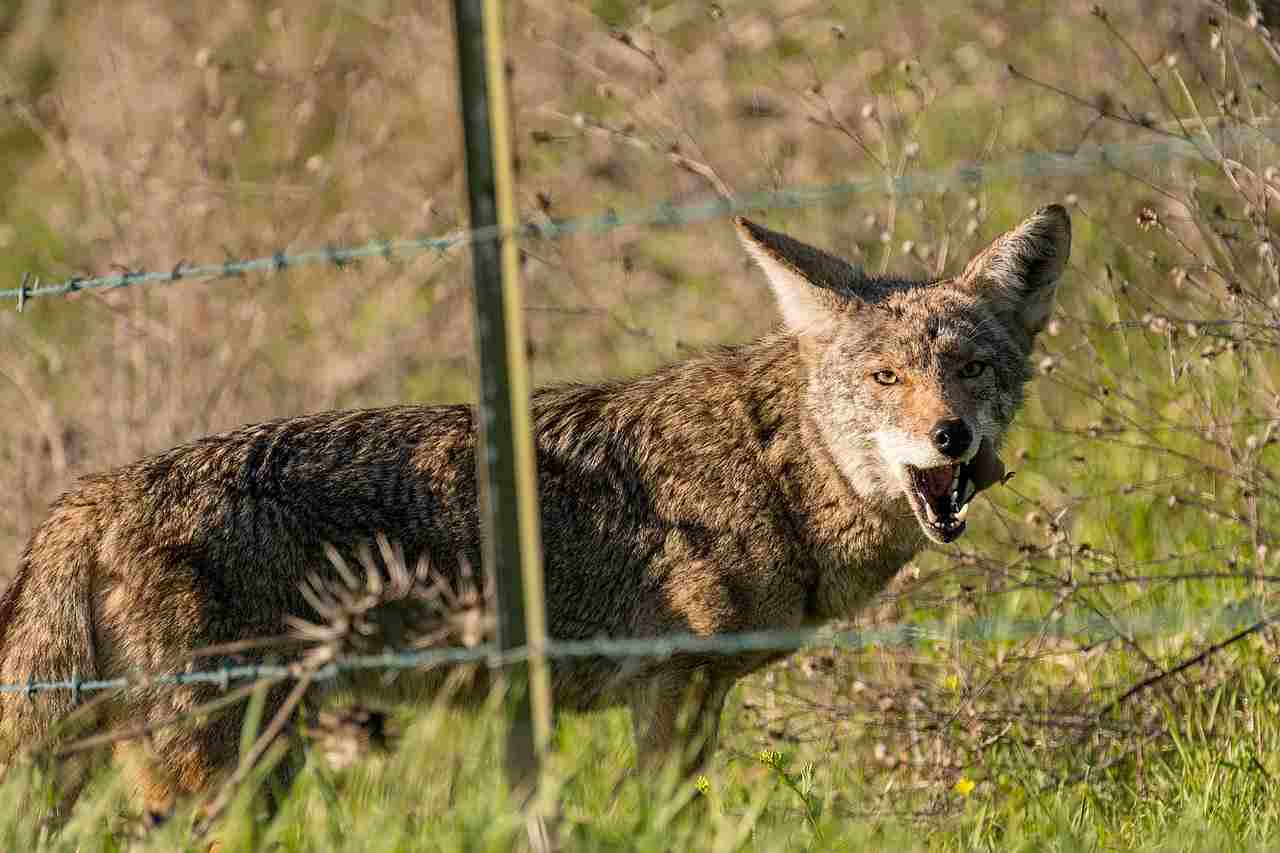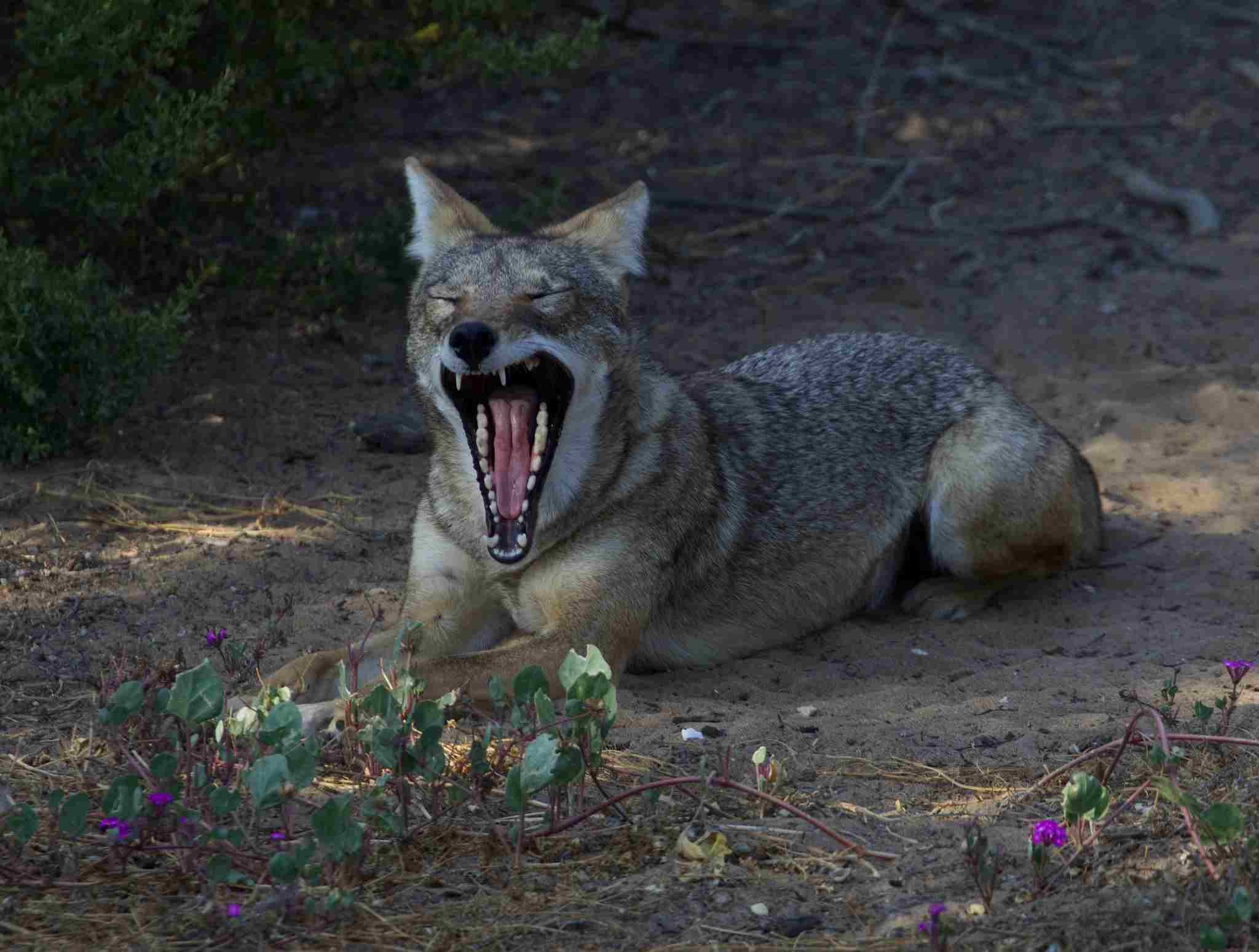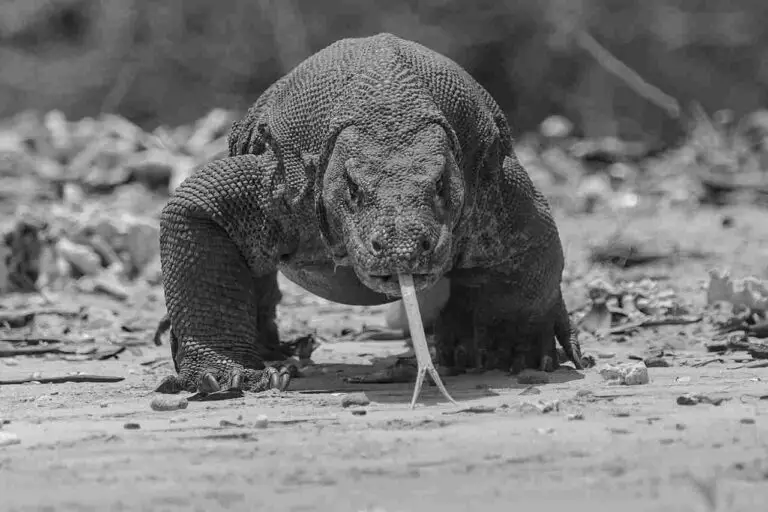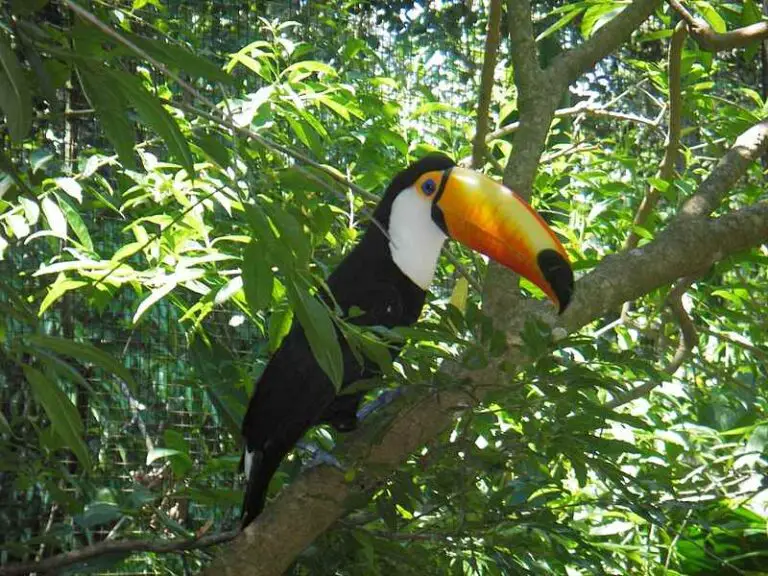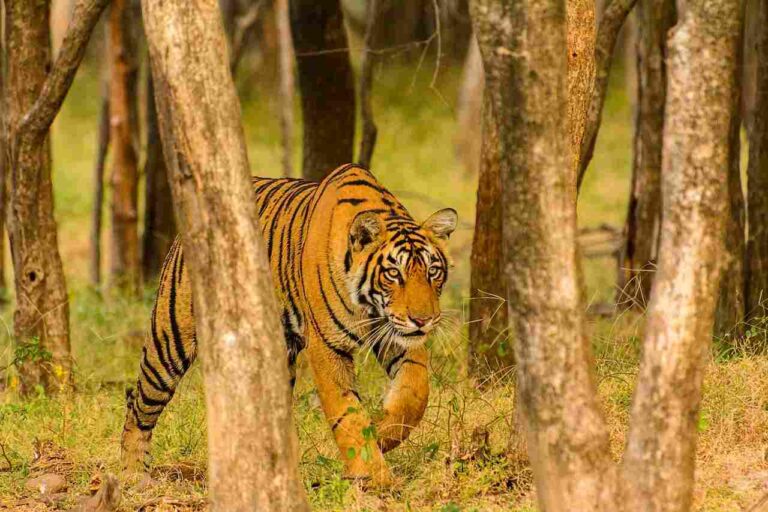23+ Animals In Virginia And Their Characteristics
Examples of dangerous animals in Virginia are the Black Bear, Timber Rattlesnake, and Copperhead Snake, all of which can pose risks if provoked or encountered unexpectedly. These animals, among others like the Eastern Cottonmouth and Eastern Black Widow Spider, require careful handling and awareness to avoid dangerous encounters. Staying on marked trails, maintaining a safe distance, and seeking immediate medical attention if bitten or stung are key safety tips. Additionally, ensuring your property is secure from animals like Coyotes, Wild Boars, and Raccoons can help minimize potential risks.
1. Black Bear
The Black Bear, a native of Virginia’s forests, is a large and powerful mammal that can be dangerous if provoked or surprised. While typically shy and avoiding human contact, Black Bears are opportunistic feeders and may approach campsites, homes, or garbage areas in search of food. Encounters with humans can become hazardous if the bear feels threatened, especially if a mother bear is protecting her cubs. It’s essential to keep a safe distance from these bears, secure food sources, and be aware of their presence in the wilderness. If you encounter a Black Bear, it’s crucial to remain calm, make yourself appear larger, and back away slowly without making direct eye contact.
2. Timber Rattlesnake
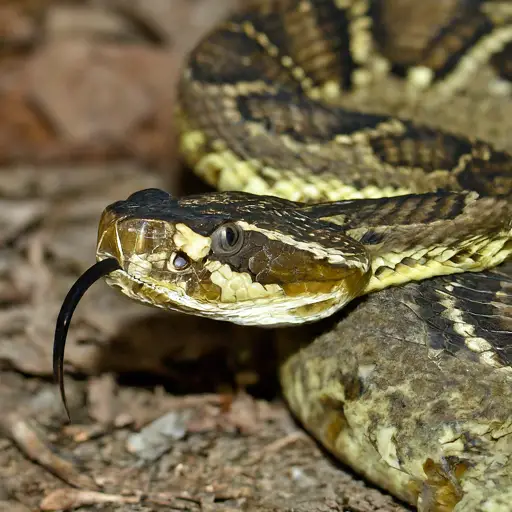
The Timber Rattlesnake, found in Virginia’s forests and mountainous regions, is one of the state’s most venomous snakes. Recognizable by its rattle and distinctive coloration, which can vary from dark brown to yellowish, this snake is generally shy but will rattle its tail to warn off intruders. Its venom can cause significant harm, so it’s critical to stay on marked trails, watch your step, and avoid disturbing these reptiles. If bitten, seek immediate medical attention as antivenom may be required.
3. Copperhead Snake
The Copperhead Snake is another venomous snake found in Virginia, known for its copper-colored head and hourglass-shaped patterns on its body. Often found in wooded areas and near water, Copperheads can blend into their surroundings, making them easy to overlook. Though their venom is less potent than the Timber Rattlesnake, bites can still cause pain, swelling, and, in rare cases, more severe reactions. It’s important to remain vigilant while hiking and to avoid reaching into unseen areas where these snakes might be hiding.
4. Eastern Cottonmouth
The Eastern Cottonmouth, or Water Moccasin, is a venomous snake commonly found in or near bodies of water in Virginia. Named for the white interior of its mouth, which it displays when threatened, this snake is aggressive and territorial. Although it’s typically seen in swamps, rivers, and marshes, it can also venture onto land. If you encounter an Eastern Cottonmouth, maintain a safe distance and do not provoke it, as its venom can cause severe tissue damage.
5. Eastern Black Widow Spider
The Eastern Black Widow Spider is one of the most venomous spiders in Virginia, known for its shiny black body and distinctive red hourglass marking on the underside of its abdomen. Typically found in dark, undisturbed areas like woodpiles, sheds, and basements, the Black Widow’s venom can cause severe pain, muscle cramps, and other symptoms, though bites are rarely fatal. To avoid encounters, use caution when reaching into dark corners or handling firewood, and if bitten, seek medical attention promptly.
6. Brown Recluse Spider
The Brown Recluse Spider, found in Virginia, is a small but potentially dangerous arachnid. Identified by its brown color and distinctive violin-shaped marking on its back, this spider prefers dark, hidden places in homes, such as closets and attics. The venom of a Brown Recluse can cause necrosis, leading to severe tissue damage. To minimize the risk of bites, avoid leaving clothing on the floor, inspect shoes before putting them on, and exercise caution in storage areas. If bitten, seek medical attention immediately.
7. Bobcat
The Bobcat, a wild feline native to Virginia, is known for its tufted ears, short tail, and elusive nature. Although these predators generally avoid human interaction, they can be dangerous if cornered or if they feel their territory is threatened. Bobcats are skilled hunters and typically prey on small mammals, birds, and occasionally livestock. Encounters with humans are rare, but if you cross paths with a Bobcat, it’s best to give it space, make noise to deter it, and avoid running, which could trigger a chase response.
8. Coyotes
Coyotes have expanded their range into Virginia, adapting well to both rural and urban environments. These intelligent and resourceful canines are generally shy around humans but can pose a threat to pets and livestock. Coyotes are known to form packs and hunt cooperatively, but they often scavenge for food, leading them to human settlements. If you encounter a coyote, make loud noises to scare it away and keep pets indoors, especially at night, to reduce the risk of attacks.
9. Wild Boar
Wild Boar, or feral hogs, are invasive in Virginia and can be aggressive if threatened. These animals have large tusks, muscular bodies, and a propensity for rooting, which can cause extensive damage to crops and landscapes. Wild Boars are known to be unpredictable, and their attacks can cause severe injuries. If you encounter a Wild Boar, keep a safe distance, avoid sudden movements, and do not attempt to confront or feed them. They are best managed by wildlife professionals.
10. Elk
Elk, reintroduced into Virginia, are large, powerful ungulates with imposing antlers in males. While generally docile, elk can be dangerous, especially during the rutting season when males are aggressive, or when a cow is protecting her calf. Their size and strength can pose a threat to people and vehicles, particularly in areas where elk crossings are common. If you encounter elk, maintain a safe distance, avoid getting between a cow and her calf, and exercise caution when driving through elk-populated areas.
11. Timber Wolf
Timber Wolves, although less common in Virginia, are large, social predators with a formidable presence. Known for hunting in packs, Timber Wolves are apex predators that can be dangerous if they feel threatened or are protecting their territory. Though wolves typically avoid human contact, they may target livestock or pets. If you encounter a Timber Wolf, maintain a safe distance, make yourself appear larger, and do not turn your back or run, as this could provoke a predatory response.
12. Bald-Faced Hornet
The Bald-Faced Hornet, a type of wasp found in Virginia, is known for its black-and-white coloring and aggressive behavior when its nest is threatened. These hornets build large, paper-like nests in trees or on structures, and their stings can be extremely painful, causing severe allergic reactions in some people. If you encounter a Bald-Faced Hornet nest, avoid disturbing it and contact a professional to remove it safely. If stung, monitor for signs of allergic reaction and seek medical attention if symptoms worsen.
13. Yellowjacket Wasp
Yellowjacket Wasps, common in Virginia, are highly aggressive insects known for their bright yellow and black coloring and rapid movements. These wasps can sting multiple times and are more aggressive in late summer when food is scarce. Yellowjackets often build underground nests, which can be inadvertently disturbed, leading to a swarm attack. If you encounter Yellowjackets, keep a safe distance, avoid sudden movements, and do not attempt to swat them. If stung, be aware of potential allergic reactions and seek medical attention if needed.
14. Deer Tick (carrier of Lyme disease)
The Deer Tick, also known as the Blacklegged Tick, is a small arachnid found in Virginia that can carry Lyme disease, a serious bacterial infection. These ticks typically reside in wooded areas and tall grass, attaching to hosts such as deer, pets, or humans to feed on blood. To avoid tick bites, wear light-colored clothing, use tick repellent, and check for ticks after outdoor activities. If bitten, carefully remove the tick and monitor for signs of Lyme disease, such as a bullseye rash or flu-like symptoms, and seek medical attention if needed.
15. Red Fox
The Red Fox, commonly found in Virginia, is a cunning and adaptable mammal with striking red fur and a bushy tail. Although generally shy around humans, Red Foxes can become bold if accustomed to human food sources or if they are protecting their territory. While they rarely pose a direct threat to humans, they may target small pets or livestock. If you encounter a Red Fox, maintain a safe distance, avoid feeding it, and secure your garbage to prevent attracting foxes to your property.
16. Gray Fox
The Gray Fox, similar to the Red Fox, is a small mammal found in Virginia with a distinctive gray coat and bushy tail. These foxes are known for their climbing ability, often found in forested areas and occasionally in urban settings. Although generally not dangerous to humans, they can become aggressive if cornered or if they feel their den is threatened. Like other wild animals, Gray Foxes may also carry diseases like rabies. If you encounter one, keep your distance and avoid feeding them or leaving food out that could attract them to your property.
17. Fisher
The Fisher is a medium-sized mammal in the weasel family found in Virginia’s forests. With a sleek body and sharp teeth, Fishers are agile predators that primarily hunt small mammals, but they can also scavenge. While not typically dangerous to humans, they can be aggressive if provoked or if they feel threatened. It’s best to avoid approaching a Fisher, and if you encounter one, give it plenty of space to avoid conflict. Be cautious with pets in areas where Fishers are known to live.
18. Alligator Snapping Turtle
The Alligator Snapping Turtle is a large, prehistoric-looking turtle found in Virginia’s freshwater habitats. Known for its massive size, powerful jaws, and spiked shell, this turtle can be dangerous if handled or threatened. Although generally not aggressive, its bite can cause severe injury due to its strength and sharp beak. If you encounter an Alligator Snapping Turtle, do not attempt to handle it and keep a safe distance. These turtles are best left to wildlife professionals for relocation if needed.
19. Striped Skunk
The Striped Skunk, commonly found in Virginia, is a small mammal with distinctive black-and-white stripes. Known for its potent defensive spray, a Skunk can be dangerous if it feels threatened. Skunks may spray when they perceive danger, causing intense odor and potential eye irritation. Additionally, they are known carriers of rabies. If you encounter a Skunk, maintain a safe distance and avoid sudden movements to prevent getting sprayed. If a skunk is acting strangely, it may be rabid, so contact local animal control.
20. Raccoon
Raccoons are adaptable mammals found throughout Virginia, easily recognized by their bandit-like facial markings and bushy tails. Although generally not aggressive, raccoons can be dangerous if they feel cornered or are protecting their young. They are also common carriers of rabies, posing a risk to humans and pets. If you encounter a raccoon, keep a safe distance and do not approach it. Secure your garbage and remove food sources to deter them from coming near your property.
21. Virginia Opossum
The Virginia Opossum is North America’s only marsupial, commonly found in Virginia. Recognized by their gray fur, pointed snouts, and long, hairless tails, Opossums are generally not aggressive. However, they can become defensive if cornered or startled. Although they rarely pose a threat to humans, they may carry diseases like rabies or parasites like fleas. If you encounter an Opossum, give it space and do not attempt to touch or capture it. They often “play dead” when threatened, a behavior used to avoid predators.
22. Northern Long-Eared Bat
The Northern Long-Eared Bat is a small bat species found in Virginia’s forests and caves. These bats are not typically dangerous to humans but can carry diseases such as rabies. Bats play a crucial role in controlling insect populations, but they can become problematic if they roost in homes or buildings. If you encounter a Northern Long-Eared Bat, avoid handling it and contact a wildlife professional for removal. Bats found indoors may require testing for rabies if they have come into contact with people or pets.
23. Great Horned Owl
The Great Horned Owl is a large, powerful bird of prey found in Virginia, known for its distinctive ear tufts and deep hooting call. Although majestic, these owls can be dangerous if they perceive a threat to their territory or young. Great Horned Owls are skilled hunters with sharp talons and beaks, capable of attacking small mammals and birds. If you encounter a Great Horned Owl, maintain a safe distance and avoid disturbing its nesting area. These owls are protective parents and may become aggressive if they feel their nest is at risk.
24. Peregrine Falcon
The Peregrine Falcon, a high-speed predator found in Virginia, is renowned for its hunting prowess and sharp vision. Although they generally do not pose a threat to humans, they can be aggressive if defending their nest or territory. These falcons often nest on high cliffs or tall buildings, and their diet primarily consists of birds and small mammals. If you encounter a Peregrine Falcon, avoid approaching its nesting area and respect its space. Disturbing their nests can provoke aggressive behavior.
| Animal | Description |
| Black Bear |
Large mammal, dangerous if threatened; avoid confrontation and maintain a safe distance.
|
| Timber Rattlesnake |
Venomous snake with a distinctive rattle; avoid disturbing it and seek medical attention if bitten.
|
| Copperhead Snake |
Venomous snake with copper-colored head; stay on trails and seek medical attention if bitten.
|
| Eastern Cottonmouth |
Aggressive venomous snake; maintain distance near bodies of water.
|
| Eastern Black Widow Spider |
Venomous spider with red hourglass mark; avoid dark corners and seek medical attention if bitten.
|
| Brown Recluse Spider |
Venomous spider with violin-shaped mark; causes tissue damage; seek medical attention if bitten.
|
| Bobcat |
Wild feline; avoid if cornered or if protecting territory.
|
| Coyotes |
Opportunistic canines; make noise to scare away and keep pets indoors at night.
|
| Wild Boar |
Large and aggressive; avoid sudden movements and contact wildlife professionals for control.
|
| Elk |
Large ungulate; can be aggressive during rutting season; keep a safe distance.
|
| Timber Wolf |
Large predator; maintain distance and do not run to avoid triggering a predatory response.
|
| Bald-Faced Hornet |
Aggressive wasp; avoid disturbing nests and seek medical attention if stung.
|
| Yellowjacket Wasp |
Aggressive wasp; multiple stings; seek medical attention for allergic reactions.
|
| Deer Tick |
Tick that carries Lyme disease; use tick repellent and check for ticks after outdoor activities.
|
| Red Fox |
Adaptable fox; avoid feeding and secure garbage to prevent attracting them to property.
|
| Gray Fox |
Small fox; avoid approaching and secure garbage to keep them away.
|
| Fisher |
Agile predator; avoid approaching and secure pets.
|
| Alligator Snapping Turtle |
Large turtle with powerful jaws; avoid handling and keep distance.
|
| Striped Skunk |
Sprays when threatened; avoid sudden movements and contact animal control if acting strangely.
|
| Raccoon |
Common carrier of rabies; keep distance and secure garbage to prevent attraction.
|
| Virginia Opossum |
Can carry rabies or fleas; avoid approaching and do not touch or capture.
|
| Northern Long-Eared Bat |
Can carry rabies; avoid handling and contact wildlife professionals for removal.
|
| Great Horned Owl |
Large bird of prey; avoid approaching its nesting area and maintain a safe distance.
|
| Peregrine Falcon |
Fast predator; avoid disturbing its nesting area to prevent aggressive behavior.
|
